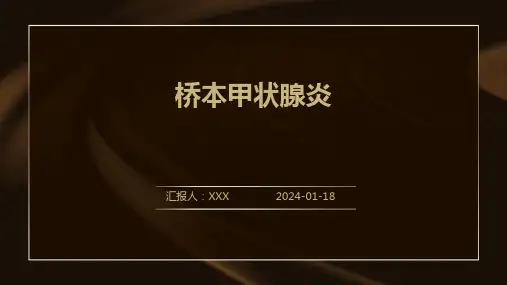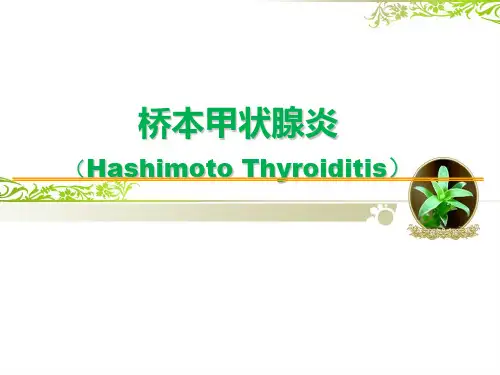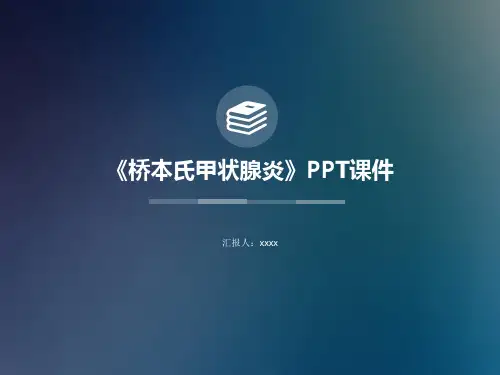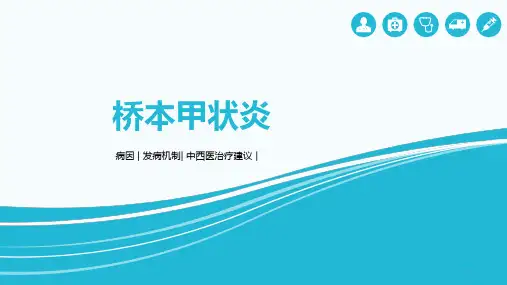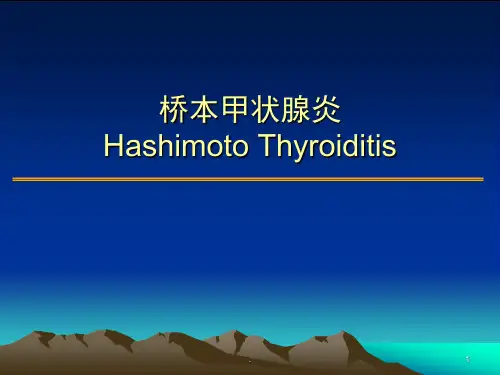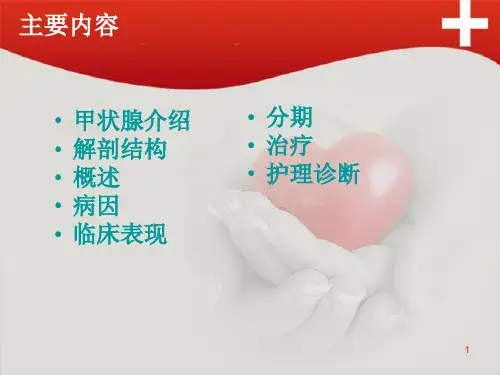1:10 ❖ 流行率:0.4-1.5%(中国) ❖ 发病率:0.15%(美国)0-0.5%(中国) ❖ 近30年来发病率持续增高
Teng W, Shan Z, Teng X, et al.Effect of iodine intake on thyroid diseases in China. N Engl J Med. 2006, 354(26):2783-93.
病因与发病机制:
❖ 遗传因素: 目前肯定的遗传易感基因包括人类白细胞抗原(HLA) 和细胞毒性T淋巴细胞相关抗原-4 (CTLA-4)
❖ 环境因素: 高碘、硒缺乏、感染、应用胺碘酮、IFN-α治疗,锂 盐,吸烟等
❖ 自身免疫因素 TgAb,TPO-Ab,TSB-Ab, Fas,ADCC(抗体依赖性细胞介导的细胞毒
Dr. Hakaru Hashimoto
甲状腺炎概述:
指甲状腺组织发生变性、渗出、坏死、增生等炎性病理改变而导 致的一系列临床病症
自身免疫性甲状腺炎:
桥本甲状腺炎 Hashimoto thyroiditis
萎缩性甲状腺炎 atrophic thyroiditis
无痛性甲状腺炎 painless thyroiditis
笨,没有学问无颜见爹娘 ……” • “太阳当空照,花儿对我笑,小鸟说早早早……”
Definition:
Hashimoto’s disease: A progressive disease of the thyroid gland characterized by the presence of antibodies directed against the thyroid and by infiltration of the thyroid gland by lymphocytes (white blood cells activated by the immune system). Hashimoto disease is the most common cause of hypothyroidism in North America and Europe. In Hashimoto disease, the thyroid gland is usually enlarged (goiter) and has a decreased ability to make thyroid hormones. Hashimoto disease predominantly affects women, and it can be inherited. Also known as autoimmune thyroiditis and Hashimoto thyroiditis.

